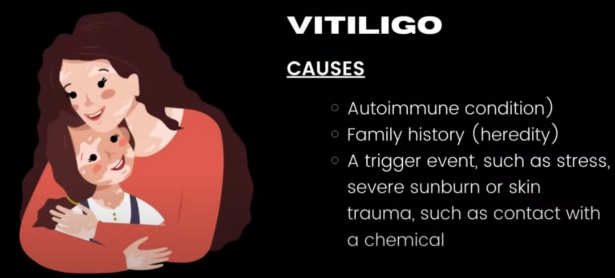
What are Causes of vitiligo

Millions of people worldwide have vitiligo. Nearly half get it before they reach 21 years of age. Most will have vitiligo for the rest of their lives. It is very rare for vitiligo to disappear.
Vitiligo occurs about equally in people of all skin colors and races. About half the people who get vitiligo are male and half are female.
The risk of getting vitiligo increases if a person has:
A close blood relative who has vitiligo.
An autoimmune disease, especially Hashimoto’s disease (a thyroid disease) or alopecia areata (causes hair loss).
What are causes of vitiligo?
The pigment that gives your skin its normal colour is melanin, which is made by cells known as melanocytes. The cause of vitiligo is not yet fully known but many think that it is a disease in which the body makes antibodies to its own melanocytes, and in doing so destroys them. After that, the skin cannot make melanin properly, and vitiligo is the result. In support of this idea is the way that people with vitiligo are more likely than others to have diseases, caused in much the same way, of other organs such as the thyroid.
It affects men and women of all races equally, but is most easy to see in people with dark skins. It is not catching.
Is vitiligo hereditary?
Only about a fifth of people with vitiligo know of someone in their family who has it; but the exact type of inheritance has not yet been worked out. One problem here is that so many people have no idea if their relatives are hiding vitiligo under their clothing.
If you have vitiligo, it does not follow that your children are sure to get it too.